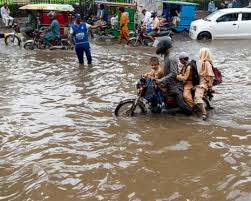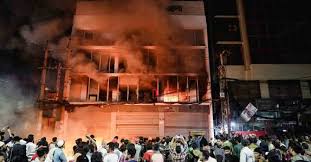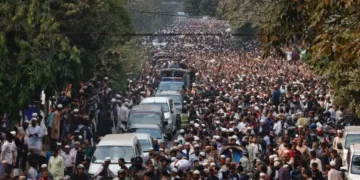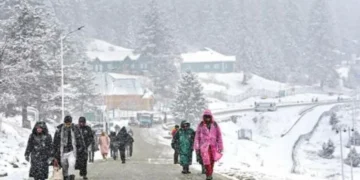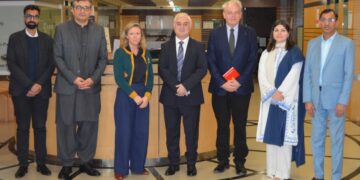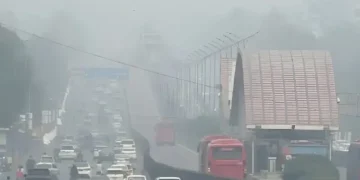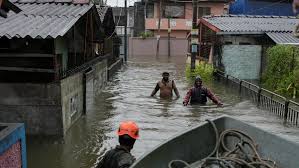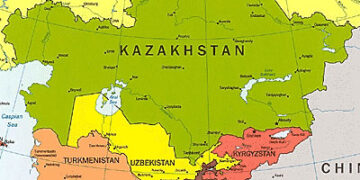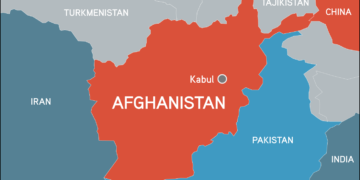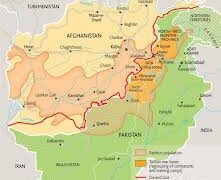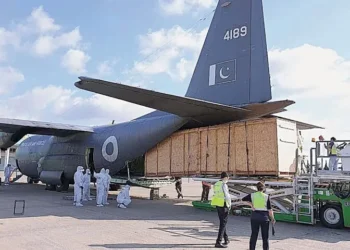ISLAMABAD (Web-Desk); As torrential monsoon rains continue to batter various regions across Pakistan, the country faces a deepening humanitarian crisis with the death toll surging to 242. The past 24 hours alone have witnessed 21 more tragic deaths caused by flash floods, house collapses, electrocution, lightning strikes, drowning, and landslides. The scale of destruction prompted President Asif Ali Zardari and Prime Minister Shehbaz Sharif to direct government agencies to ramp up emergency response operations and rehabilitation efforts.
According to the latest figures released by the National Disaster Management Authority (NDMA), the monsoon’s toll on life and property continues to escalate. Since the beginning of the rainy season, 242 people have lost their lives, including 83 men, 43 women, and 116 children. An additional 598 people have sustained injuries, comprising 232 men, 167 women, and 199 children.
In the last 24 hours alone, the NDMA recorded 10 fatalities in Khyber Pakhtunkhwa, five in Islamabad, three in Gilgit-Baltistan, two in Sindh, and one in Azad Jammu and Kashmir (AJK). Among the deceased were six adult men, three women, and a shocking twelve children. Six people were injured across these regions.
The devastation is widespread. Punjab has emerged as the worst-hit province, reporting 135 deaths and 470 injuries. Khyber Pakhtunkhwa follows with 56 deaths and 71 injuries. Sindh has recorded 24 fatalities, while Balochistan has reported 16. Islamabad, though smaller in area, has seen six deaths and one injury so far. Gilgit-Baltistan and AJK have also suffered losses in both human lives and infrastructure.
The primary cause of the casualties, the NDMA reports, remains the collapse of poorly constructed or vulnerable homes under heavy rainfall. This is followed by cases of drowning, electrocution, flash floods, and landslides, highlighting the multifaceted nature of the disaster.
Infrastructure damage is equally alarming. In the past 24 hours, 50 homes were razed to the ground, and eight livestock animals perished. The overall number of destroyed houses during this monsoon now stands at 854, while 208 livestock animals have died. These losses add to the strain already weighing down many rural families whose livelihoods depend on agriculture and animal husbandry.
President and Prime Minister Express Grief and Mobilize Response
In separate official statements, President Asif Ali Zardari and Prime Minister Shehbaz Sharif conveyed their condolences to the affected families. Both leaders expressed sorrow over the immense loss of life and underscored the urgency of speeding up rescue and relief operations.
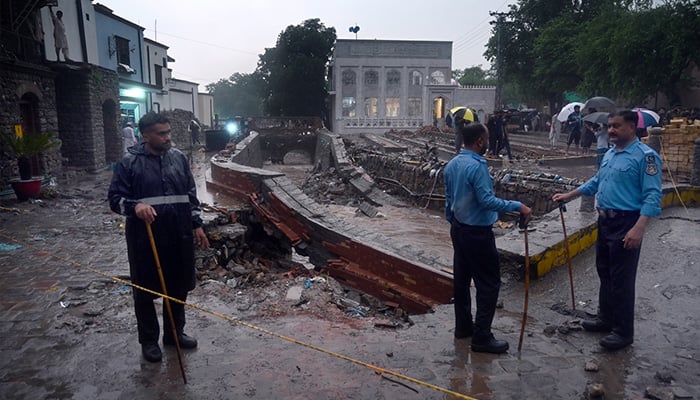
Prime Minister Shehbaz Sharif instructed the NDMA to maintain close coordination with provincial governments and relevant agencies. He emphasized the importance of ensuring that timely relief—including food, clean drinking water, and medical assistance—reaches those affected. He also urged authorities to remain vigilant and prepared for further deterioration in weather conditions.
Additionally, the Prime Minister directed the National Highway Authority (NHA) and Frontier Works Organization (FWO) to prioritize the reopening of highways and connecting roads impacted by the flooding, as connectivity remains crucial for transporting relief goods and facilitating evacuations.
Weather Department Warns of Continued Rainfall and Flash Flood Risk

The Pakistan Meteorological Department (PMD) has forecasted further downpours across Kashmir, Khyber Pakhtunkhwa, Punjab, Gilgit-Baltistan, Islamabad, and parts of Balochistan from now through July 23. The department has warned of potentially heavy to very heavy rainfall, especially in northern and hilly areas.
The PMD identified regions at high risk of flash flooding in local streams and nullahs, particularly Chitral, Swat, Dir, Shangla, Abbottabad, Kohistan, Mansehra, Buner, Nowshera, Swabi, Mardan, Murree, Galiyat, and Kashmir. Urban centers such as Islamabad, Rawalpindi, Lahore, Sargodha, Faisalabad, Okara, and Gujranwala are on alert for urban flooding.
The warning also extends to the risk of landslides in vulnerable mountain regions, including Gilgit-Baltistan and northern Khyber Pakhtunkhwa, where steep terrain and saturated soil can trigger sudden slides.
Disturbing Footage Surfaces Amid Worsening Flood Conditions
Heart-wrenching videos have surfaced on social media showing the destructive force of monsoon-triggered floods. One particularly distressing video from Islamabad shows a vehicle being swept away in a storm drain in a private housing society. Rescue officials later confirmed that the car’s occupants were Colonel (retd) Ishaq Qazi and his 25-year-old daughter.

According to initial reports, the retired military officer had left his home at approximately 8:15 a.m. to drop off his daughter. Despite a cloudburst warning issued at the time, the vehicle was caught in rapidly rising floodwaters near a storm drain. A rescue operation is currently underway with the support of helicopters and ground teams, particularly near Soan Bridge and Gorakhpur, where the drain merges into the Soan River.
The PMD reported 38mm of rainfall in Saidpur, with significant rain also recorded in Bokra (23mm), Golra (22mm), Chaklala (24mm), and other parts of the twin cities.
In response to the rising water levels, the Capital Development Authority (CDA) has activated a city-wide emergency response plan, which includes 24/7 monitoring and the deployment of rapid-response teams. CDA Chairman Muhammad Ali Randhawa reiterated that preparedness remains the city’s top priority and encouraged citizens to report emergencies via helpline 1334.
Flood Havoc in Gilgit-Baltistan: Babusar Route Severely Affected
Meanwhile, Gilgit-Baltistan has been gripped by one of the worst flood-related disasters this season. A cloudburst on Babusar Road triggered deadly flash floods that killed at least five people, including four tourists and a local resident, while dozens remain missing.
Diamer Deputy Commissioner Atta-ur-Rehman confirmed that the incident occurred near the Babusar route following intense rains. The cloudburst caused destruction along a 7–8 km stretch between Jal and Diyung. Key sections of the Karakoram Highway and Babusar Road were blocked by landslides and boulders.
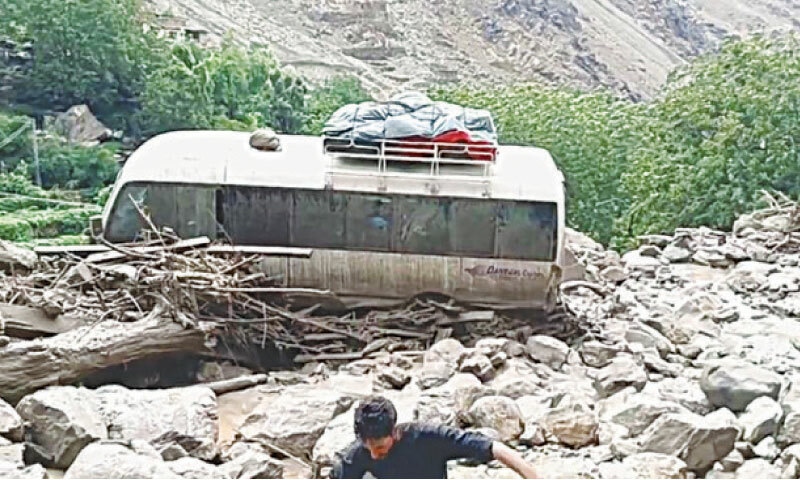
More than 30 vehicles, including several tourist vans and coasters, were either damaged or swept away. Four connecting bridges and over 50 houses were destroyed. In addition, two mosques were flattened by the raging waters, and the region’s power and communication systems were severely disrupted.
Authorities managed to recover three bodies, while a three-year-old child is still missing. Dozens of injured individuals have been shifted to hospitals, while many stranded tourists are being rescued using military helicopters.
Army, Local Volunteers Mobilize in Relief Efforts
Rescue operations are being carried out with the involvement of the Pakistan Army, Gilgit-Baltistan Scouts, local police, and volunteers. Over 200 tourists have been rescued and transported to Chilas, where hotels and guesthouses have opened their doors free of charge.
Due to the challenging terrain, night-time rescue missions were temporarily halted but resumed at first light. Army engineers and the National Highway Authority are actively working to restore access along key routes such as Passu, Jalkhad, and Governor Farm.
Deputy Commissioner Rehman stated that more machinery is being deployed to clear blocked roads and assist with evacuation and delivery of essential supplies like food, clean water, and medicine.
More Rain Forecast and Rescue Missions Continue Nationwide
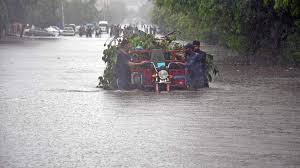
In addition to the major disaster in Babusar, Upper Kohistan in Khyber Pakhtunkhwa has also experienced heavy flooding. In Kandia tehsil, multiple homes, water channels, and even traditional watermills have been destroyed. One woman was swept away by the surging waters.
Ghizer district witnessed landslides triggered by lightning, damaging houses, roads, and a school. The local administration is assessing damage and working to assist displaced families.
Separately, NDMA confirmed five more fatalities from various flood-related incidents during the previous 24 hours, bringing the nationwide toll to 242. The situation remains volatile as the country braces for continued rainfall.
Climate Change, Urban Planning Failures Magnify the Crisis
Experts note that while monsoon rains are vital for South Asia’s agricultural cycle, their devastating consequences in recent years have intensified due to climate change, deforestation, and unregulated urbanization. Poor drainage infrastructure and encroachment on natural waterways make major cities like Lahore, Karachi, and Islamabad especially vulnerable.
Meteorologists have emphasized that the pattern of cloudbursts, urban flooding, and prolonged rainfall is becoming more frequent due to the warming climate, requiring long-term policy intervention and climate adaptation strategies.
National Appeal for Solidarity and Vigilance
Authorities are urging the public to stay indoors during heavy rains, avoid unnecessary travel in flood-prone areas, and refrain from attempting to cross overflowing streams or nullahs. The NDMA and PMD continue to issue real-time alerts via media and SMS services.
As Pakistan endures this challenging period, the unified call from both federal and provincial authorities is one of resilience and cooperation. Relief agencies, military personnel, civilian volunteers, and local governments are working around the clock, even as more rainfall threatens to worsen the crisis.
The coming days will test the nation’s preparedness and collective strength. Yet amid the destruction, countless stories of rescue, courage, and solidarity continue to emerge from across the country—offering hope in the face of a grave national challenge.
